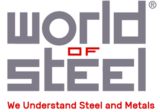Steel Industry – Need for transformation!
It has been a cycle of gloom-boom and again we are getting towards the gloom in the steel industry. Of course last 15 years has seen much changes, one is of course geographical shift to the East and more particularly to China and India. Production has also risen in Latin America and in Europe and USA has declined. So steel production has shifted increasingly to the places of growing consumption while the decline in Europe has been in line with the decline in economies with Turkey being the only bright spot (if it any longer considers itself to be a part of Europe) with its strategic location straddling Europe and Asia and access to the growing Middle East Markets and North Africa.
What however has not changed is the lack of flexibility in the production and the waste in the system. We have to admit traditionally steel making has been a return on ego rather than a return on investment. Expansions happen at the top of the boom cycle with easy access to finance. Waste is inherent to steel making. And over leveraged balance sheets are common when the cycle turns.
At some stages of steel production it is of course continuous process (from the blast furnace to slabs and billets) which is difficult to change unless EAF are used with their smaller production capacity but higher cost. This may not be a bad idea given the increasing volatility in the steel industry. Adding capacity in steps and keeping capacity below potential demand may not be a bad idea if the industry wants to be profitable and keep its fixed head costs low.
As one moves more downstream there are surely opportunities for flexibility but we are tied into the old school of thought of cost of production and utilization of equipment which increases Work-in-progress and finished inventories with no markets to serve. This has what has happened in recent times when the boom suddenly petered out on us.
We need to take a fresher look. Make our equipment increasingly flexible with shorter lead times, set-up-times and smaller batch sizes. We have to try and get more uniform flow through the production system.
I have seen Galvanizing lines being used both for Hot-dipped galvanizing and Galvalume with short change over times. We have to also question our romance with technology and automation that adds capacity and requires higher utilization to payoff for it. Instead we should concentrate on reliable, thoroughly tested technology that serves our customers, processes and our people.
Further we need to map the value process. Concentrate on making the value adding process effective and removing non-value activities and removing waste from the system. This is of course not a one time effort but a continuous process and must become become a part of the culture for operational excellence which ensures quality at source. Being frugal is no longer a sin. We also need to take our people along on the journey with multi-skilling and continuous training.
We have to look across industries and adapt ideas. A sale at Walmart counter gives access to P&G to their inventory level. Maybe such integration can help with some customers….perhaps the automobile and Consumer durables and it could be a “pull” system to avoid overproduction. But this requires respecting the extended network of partners. Unfortunately producers want to control the supply channels during boom times with forward integration and the industry itself lacks trust in partners due to frequent re-negotiations.
As an industry we have the 1950s mentality while the rest of the world has moved on. Maybe the current downturn will help us reflect and transform ourselves into lean, learning enterprises.
Otherwise we will continue being at the mercy of the bull-whip effect which has been a part of our industry and has in fact increased with globalization and access to information.
dtd. 26/10/2012
